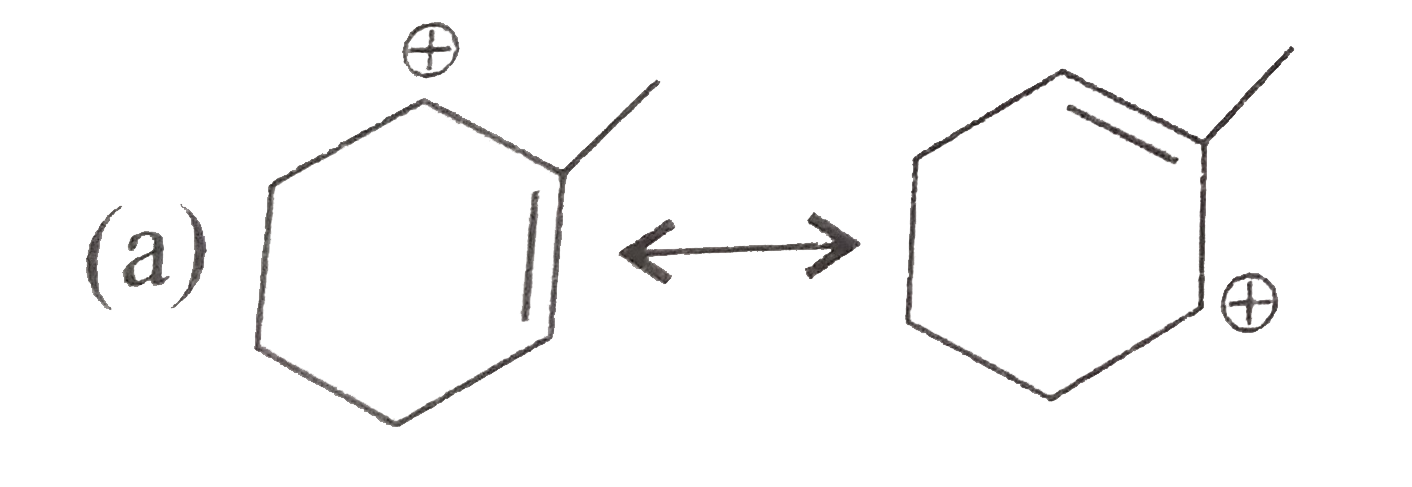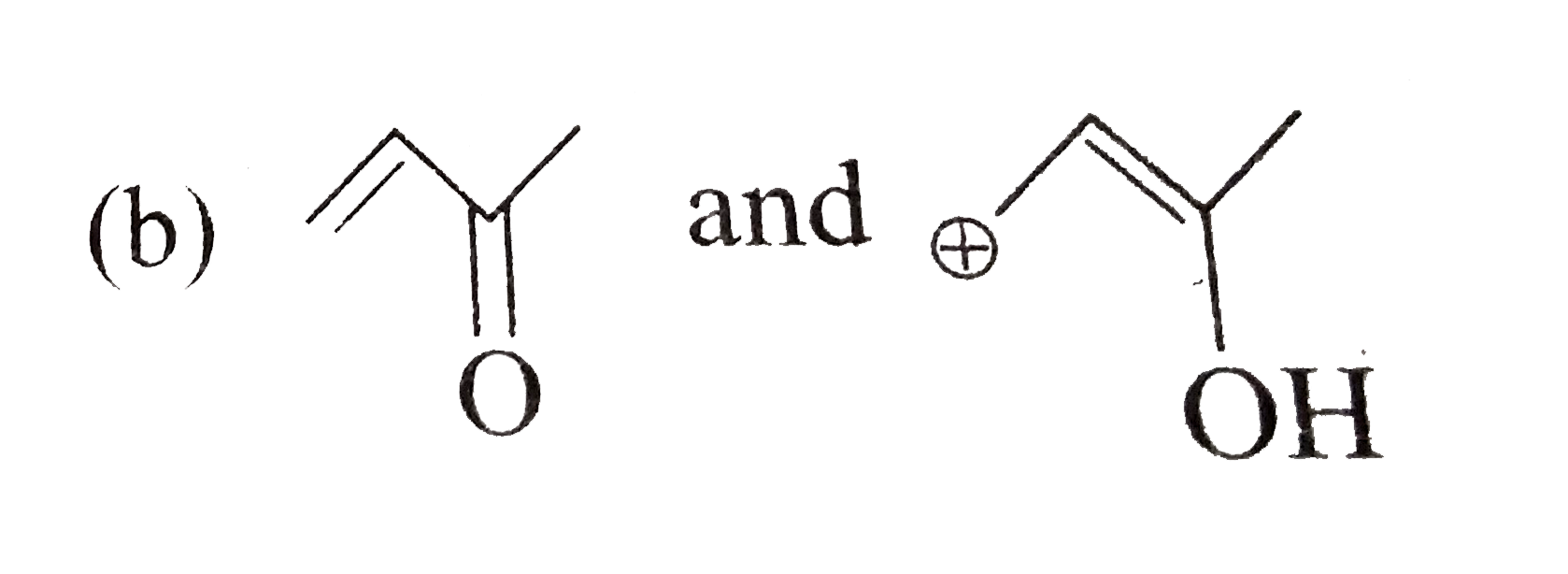Which of the following pair constitute resonance structure?



H3C−CH=CH−CH3 and H3C−CH2−CH=CH2
The correct Answer is:b
To determine which pairs constitute resonance structures, we need to understand the concept of resonance in chemistry. Resonance structures are different ways of drawing the same molecule that show the delocalization of electrons. Here’s a step-by-step solution to the question:
Step 1: Identify the pairs of structures
We need to analyze each pair of structures provided in the question to see if they can be considered resonance structures.
Step 2: Analyze Pair A
- Structure 1: CH3-N^+ (where N has 4 bonds) and O^-
- Structure 2: CH3-O=N (double bond between N and O)
In this case, the positions of atoms are changing between the two structures. The nitrogen atom's bonding changes, which means this is not a resonance structure.
Hint: Check if the atoms maintain their positions in resonance structures; only electron positions should change.
Step 3: Analyze Pair B
- Structure 1: CH3-C(=O)-CH2^-
- Structure 2: CH3-C^-(O^-) (where the negative charge is now on the oxygen)
Here, the negative charge is transferred between the carbon and oxygen while the positions of the atoms remain the same. This indicates that these two structures can be considered resonance structures.
Hint: Look for structures where only the electrons are rearranged, and the overall atom arrangement remains unchanged.
Step 4: Analyze Pair C
- Structure 1: CH3-CO-CH3
- Structure 2: CH3-C(OH)-CH2
In this case, the position of the hydrogen atom is changing, which means this is not a resonance structure but rather a tautomerization.
Hint: Tautomerization involves a change in the position of atoms, unlike resonance structures.
Step 5: Analyze Pair D
- Structure 1: CH3-CH=CH-CH2-CH3
- Structure 2: CH3-CH2-CH=CH2
Again, the position of hydrogen atoms is changing, indicating that this is not a resonance structure.
Hint: Ensure that the connectivity of atoms remains the same for resonance structures.
Conclusion
From the analysis, only Pair B constitutes resonance structures. The other pairs involve changes in the positions of atoms, which disqualifies them from being resonance structures.
Final Answer
Only Pair B constitutes resonance structures.
We need to analyze each pair of structures provided in the question to see if they can be considered resonance structures.
- Structure 1: CH3-N^+ (where N has 4 bonds) and O^-
- Structure 2: CH3-O=N (double bond between N and O)
In this case, the positions of atoms are changing between the two structures. The nitrogen atom's bonding changes, which means this is not a resonance structure.
- Structure 1: CH3-C(=O)-CH2^-
- Structure 2: CH3-C^-(O^-) (where the negative charge is now on the oxygen)
- Structure 1: CH3-CO-CH3
- Structure 2: CH3-C(OH)-CH2
- Structure 1: CH3-CH=CH-CH2-CH3
- Structure 2: CH3-CH2-CH=CH2
From the analysis, only Pair B constitutes resonance structures. The other pairs involve changes in the positions of atoms, which disqualifies them from being resonance structures.
Only Pair B constitutes resonance structures.
Topper's Solved these Questions
- CHEMICAL BONDING AND MOLECULAR STRUCTUREBOOK - A2ZCHAPTER - CHEMICAL BONDING AND MOLECULAR STRUCTUREEXERCISE - Dipole Moment
28 Videos
- CHEMICAL BONDING AND MOLECULAR STRUCTUREBOOK - A2ZCHAPTER - CHEMICAL BONDING AND MOLECULAR STRUCTUREEXERCISE - Valence Bond Theory (Vbt)
30 Videos
- CHEMICAL BONDING AND MOLECULAR STRUCTUREBOOK - A2ZCHAPTER - CHEMICAL BONDING AND MOLECULAR STRUCTUREEXERCISE - Section D - Chapter End Test
30 Videos
- ATOMIC STRUCTUREBOOK - A2ZCHAPTER - ATOMIC STRUCTUREEXERCISE - Section D - Chapter End Test
30 Videos
- CHEMICAL EQUILIBRIUMBOOK - A2ZCHAPTER - CHEMICAL EQUILIBRIUMEXERCISE - Section D - Chapter End Test
30 Videos
Similar Questions
Knowledge Check
Which of the following pairs constitutes a buffer
ANHO3 and NH4NO3BHCl and KClCNHO2 and NaNO2DNaOH and NaClWhich of the following is pair of resonance structure?
A B
B C
C D
D
Which of the following pairs are resonance structures of each other ?
A B
B C
C D
D
Which of the following pairs constitutes a buffer ?
View SolutionWhich of the following pairs of structure are resonance structure?

View SolutionWhich of the following structures are resonance structures ?
View SolutionWhich one of the following pairs constitutes isotones?
View SolutionWhich of the following is the most stable resonance structure ?
View Solution

